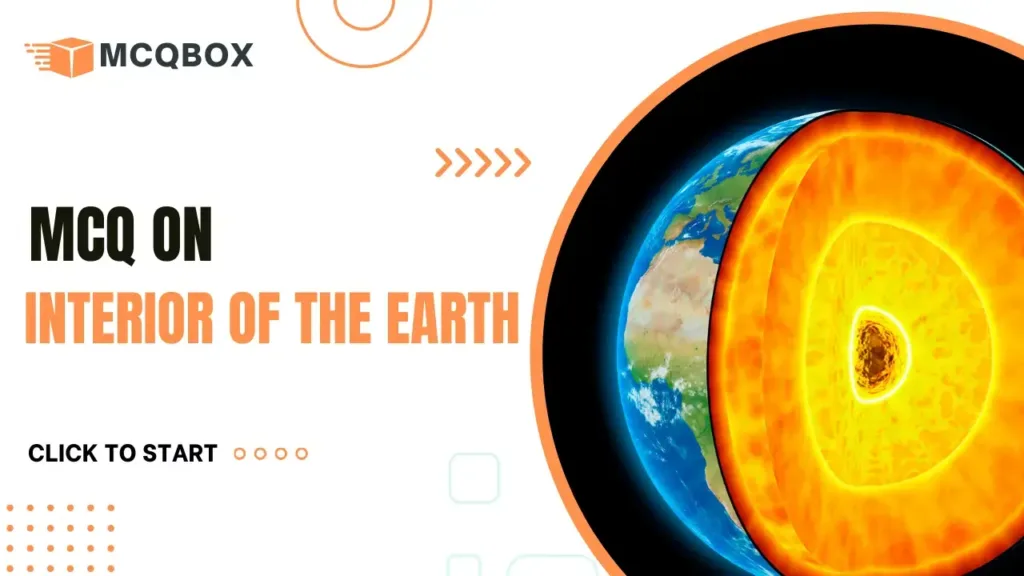Test your knowledge with this challenging MCQ on Interior of the Earth! Get ready to learn and level up your understanding of the world around us. This topic is useful for the students Class 9th to 12th and for those preparing for Competitive Exams like UPSC , SSC and other State Level Exams
Table of Contents

MCQ on Interior of the Earth
1. What percentage of the Earth’s volume does the core occupy?
a) 1%
b) 15%
c) 84%
d) 100%
Answer: b) 15%
2. How is the magnetic field of the Earth generated?
a) By the metallic nature of the mantle
b) By conduction in the crust
c) By convection in the liquid outer core
d) By the solid inner core
Answer: c) By convection in the liquid outer core
3. What type of heat transfer occurs in the mantle?
a) Radiation
b) Conduction
c) Convection
d) Insulation
Answer: c) Convection
4. What are the two types of crust?
a) Oceanic and terrestrial
b) Oceanic and sedimentary
c) Continental and sedimentary
d) Oceanic and continental
Answer: d) Oceanic and continental
5. Which type of crust is primarily composed of basalt lava flows?
a) Oceanic crust
b) Continental crust
c) Sedimentary crust
d) Terrestrial crust
Answer: a) Oceanic crust
6. How is the structure of the mantle primarily understood?
a) Through direct observation
b) By analyzing meteorites
c) Using seismic waves and heat flow
d) By studying volcanic eruptions
Answer: c) Using seismic waves and heat flow
7. What causes the particles in the bottom layer of the mantle to rise?
a) Rapid collisions of atoms
b) Heat conducted from the crust
c) Heat conducted from the core
d) Magnetism from the inner core
Answer: c) Heat conducted from the core
8. Which type of heat transfer occurs only in solid materials?
a) Convection
b) Radiation
c) Conduction
d) Insulation
Answer: c) Conduction
9. What is the outer surface of the Earth known as?
a) Mantle
b) Core
c) Crust
d) Lithosphere
Answer: c) Crust
10. Which type of crust is primarily composed of metamorphic, igneous, and sedimentary rocks?
a) Oceanic crust
b) Continental crust
c) Basaltic crust
d) Granitic crust
Answer: b) Continental crust